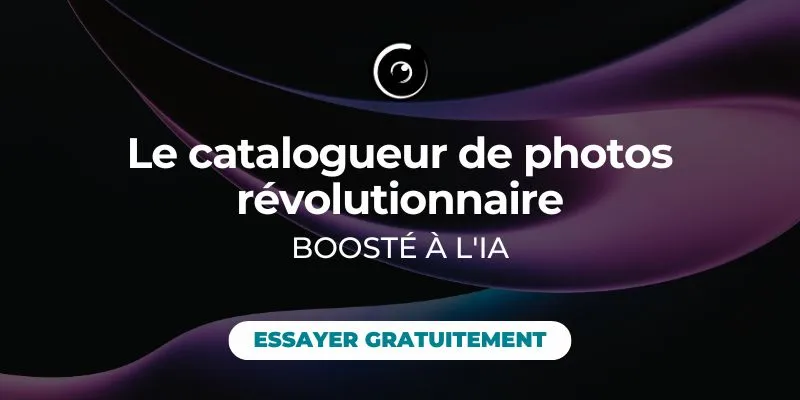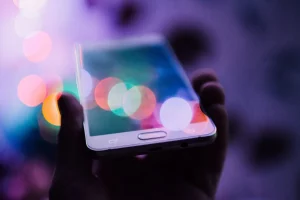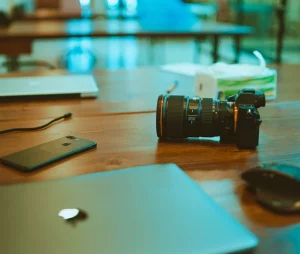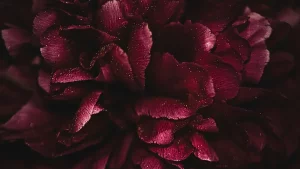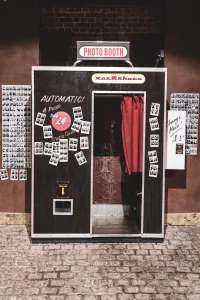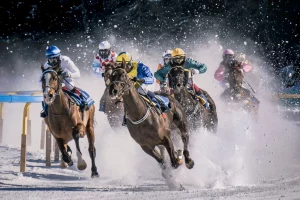En matière de photographie, le talent et la technique du photographe sont souvent présentés comme les facteurs déterminants pour une prise de vue réussie. En addition à ces éléments qui participent incontestablement à la qualité des clichés, on retrouve l’équipement de photographie, qui est loin d’être accessoire. Tout aussi indispensable, il joue, un rôle de premier plan dans le travail du photographe.
Dans le cadre de la photographie de portrait, en l’occurrence, l’importance du matériel se fait davantage remarquer. De l’appareil photo aux différents accessoires, découvrez l’ensemble des outils qui contribuent au secret de la photo portrait de bonne qualité.
Sommaire
Les essentiels pour faire des photos de portrait
Avec l’expansion et la démocratisation des smartphones, n’importe qui peut s’improviser photographe. Cependant, pour débuter en photographie de portrait ou pour se professionnaliser dans cette discipline, s’équiper d’un boîtier et d’un objectif est la première étape à franchir.
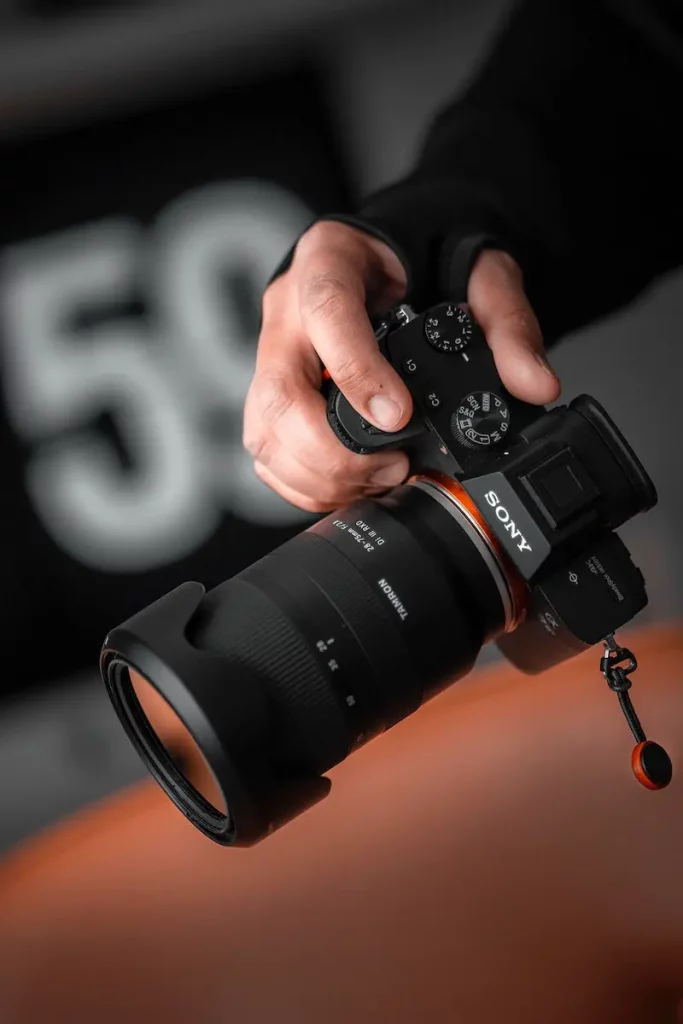
Le boîtier
Le boîtier ou appareil photo est sans conteste le principal instrument de travail du photographe portraitiste. Il en existe plusieurs gammes et modèles proposés par des marques, telles que Nikon, Canon, Sony, etc. Plus précisément, l’on a le choix entre :
- le compact, qui est un modèle d’appareil photo petit, automatique, encore utilisé pour faire des photos portrait souvenirs ;
- le bridge, un appareil à la fois automatique et manuel qui emprunte les caractéristiques du boîtier compact et du boîtier réflex ;
- l’hybride, qui est un modèle compact et doté de certaines fonctionnalités des appareils réflex ;
- les boîtiers réflex, qui sont disponibles en modèles grand public et en modèles professionnels avec un capteur de grande taille.
Le choix de l’un ou l’autre de ces types de boîtiers dépend des besoins techniques recherchés, de l’expérience du photographe, du rapport qualité/prix de l’équipement, du budget dont on dispose, etc. Quel que soit le type d’appareil photo choisi, il est important d’opter pour un modèle professionnel, à l’instar du Canon Eos Mark.
Les objectifs
Si le choix du boîtier mérite que l’on y consacre du temps, celui de l’objectif ne le nécessite pas moins, car ce dernier est l’accessoire phare de l’appareil photo. Ordinairement vendu en kit avec les boîtiers hybrides et réflex, ce dernier peut tout de même être acheté séparément, si l’on veut prendre des photos portrait d’une certaine qualité.
Dans ce cas aussi, l’on a le choix entre une pluralité d’objectifs variant en fonction de la distance focale estimée en millimètre (mm) et en fonction de l’ouverture du diaphragme. On distingue, entre autres :
- l’objectif 35 mm, utilisé pour faire les prises de vue de plein corps ;
- l’objectif 50 mm f/1,8, idéal pour débuter en photographie de portrait et pratique pour photographier un groupe de personnes ;
- l’objectif 85 mm f/1,4, recommandé pour faire des captures de face flatteuses et pour éviter les déformations du visage ;
- l’objectif 105 mm, un objectif polyvalent qui permet de ressortir les détails, les textures et de faire des gros plans sur les yeux, par exemple ;
- l’objectif 135 mm, utilisé de préférence pour photographier un sujet de loin, mais déconseillé pour faire un portrait de pied ;
- l’objectif 70-200 mm, un téléobjectif idéal pour conserver tout le réalisme du visage ;
- etc.
Ces différentes optiques peuvent être classées en deux catégories, à savoir celle des objectifs zoom et celle des objectifs fixes. En photographie de portrait, les modèles à focale fixe sont à privilégier, car ils possèdent une grande ouverture de diaphragme et garantissent, de ce fait, une meilleure qualité d’image.
Les accessoires du photographe portraitiste
En dehors d’un appareil photo et d’un objectif, le matériel du photographe de portrait est constitué de plusieurs accessoires.
La boîte à lumière
En photographie de portrait, la lumière est le premier allié du photographe. En effet, elle est indispensable pour favoriser les prises de vue et a un impact indéniable sur la qualité des images.
En matière de lumière, l’on peut se contenter de l’éclairage naturel. Cependant, il n’est pas toujours évident de ressortir tous les traits d’un visage en misant sur la seule lumière du soleil ou de la lune. Les boîtes à lumière apparaissent dès lors comme des accessoires de premier choix, car elles permettent de modifier l’éclairage à sa guise et de parer les ombres ou les lumières gênantes.
Le flash
Autre accessoire de manipulation de la lumière, le flash de studio ou torche flash est le plus souvent utilisé pour réaliser les shootings portrait en studio photo. Il permet de moduler les ombres et l’intensité de la lumière et peut même servir à colorer les scènes.
Le réflecteur de lumière
Comme on peut s’en douter, le réflecteur fait partie du matériel de manipulation de l’intensité lumineuse en photographie portrait. Utilisé comme source de lumière, il sert d’accompagnement au flash ou au projecteur et permet de réfléchir la lumière naturelle pour une meilleure mise en valeur des traits du visage à photographier. Son rôle est également d’atténuer la lumière du soleil lorsque celle-ci est intense. Il en existe plusieurs versions, à savoir :
- le réflecteur blanc, utilisé pour avoir une lumière douce ;
- le réflecteur argenté, qui permet d’avoir une lumière froide et dure ;
- le réflecteur doré, qui fournit une lumière chaude.
La carte mémoire
En tant qu’élément de stockage, la carte mémoire a toute sa place dans les accessoires qui forment le matériel du portraitiste. Son rôle est de conserver les photos prises à diverses occasions.
En général, il en existe deux types, à savoir la carte mémoire Compact Flash et la carte SD. Pour choisir son modèle, il faut tenir compte de la capacité de stockage en GO de la carte mémoire, de la vitesse de copie des photos stockées de l’appareil photo vers l’ordinateur, de la vitesse d’enregistrement des images pendant la prise de vue, etc.
Le trépied
Généralement utilisé en photo paysage ou pour réaliser des photos de nuit, le trépied n’est pas moins utile en photographie de portrait. Il est aussi utilisé pour faire de l’autoportrait. Plus généralement, son rôle est de maintenir l’appareil photo statique et de permettre au photographe de réaliser ses prises de vue dans tous les angles possibles.
Les fonds et les kits support de fonds
En photographie de portrait, le fond utilisé a une influence indéniable sur la qualité des images. Si le ciel et le décor naturel servent de fond dans les photos portrait réalisées en extérieur, il n’en est pas de même dans un studio maison ou professionnel, où l’on est amené à imaginer et à créer soi-même l’arrière-plan. À cet effet, les tissus, les plantes et d’autres éléments sont mis à contribution.
Toutefois, on peut se simplifier la tâche en optant pour un kit de support de fonds. Plusieurs types de fonds photo, tels que les modèles pliables ou en tissu, peuvent, dans ce cas, être utilisés au gré des séances de shooting.
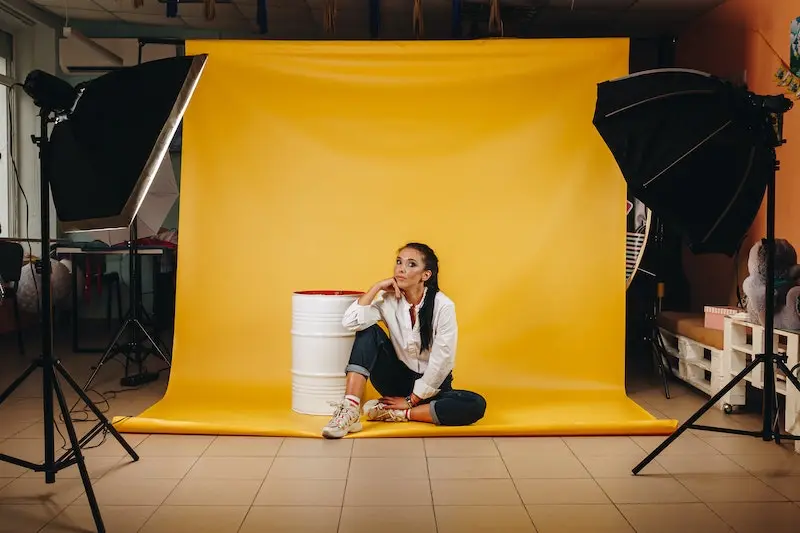
Le sac photo
Le sac photo sert à contenir le matériel de travail du photographe et à le protéger des chocs ainsi que des intempéries. À ce titre, il est un accessoire des plus utiles. Diverses options s’offrent au portraitiste en fonction de son expérience.
Ainsi, on peut s’orienter vers la sacoche en bandoulière, qui est un modèle peu onéreux, discret et idéal pour les débutants. Quant aux portraitistes expérimentés, ils peuvent se tourner vers le sac à dos photo. Ce dernier est modulable, spacieux, doté de plusieurs poches, mais il est surtout imperméable et confortable pour le transport.
En ce qui concerne les experts en photo portrait souvent appelés à voyager, ils devraient privilégier la valise, qui est idéale pour transporter son studio et l’ensemble de son matériel partout avec soi.
- Tout ce qu’il faut savoir pour débuter en photographie
- Comment bien choisir l’objectif d’un appareil photo ?
- Comment bien choisir un flash externe ?
- Quel matériel pour faire des photos de paysage ?
- Quel ordinateur choisir pour faire des retouches photo ?
- Comment créer un studio photo ?
- Les solutions d’éclairage en photographie
- Le matériel pour faire des photos de sport
- Le matériel pour de la photographie animalière
- Comment développer ses photos soi-même ?
- Comment choisir son trépied d’appareil photo ?



